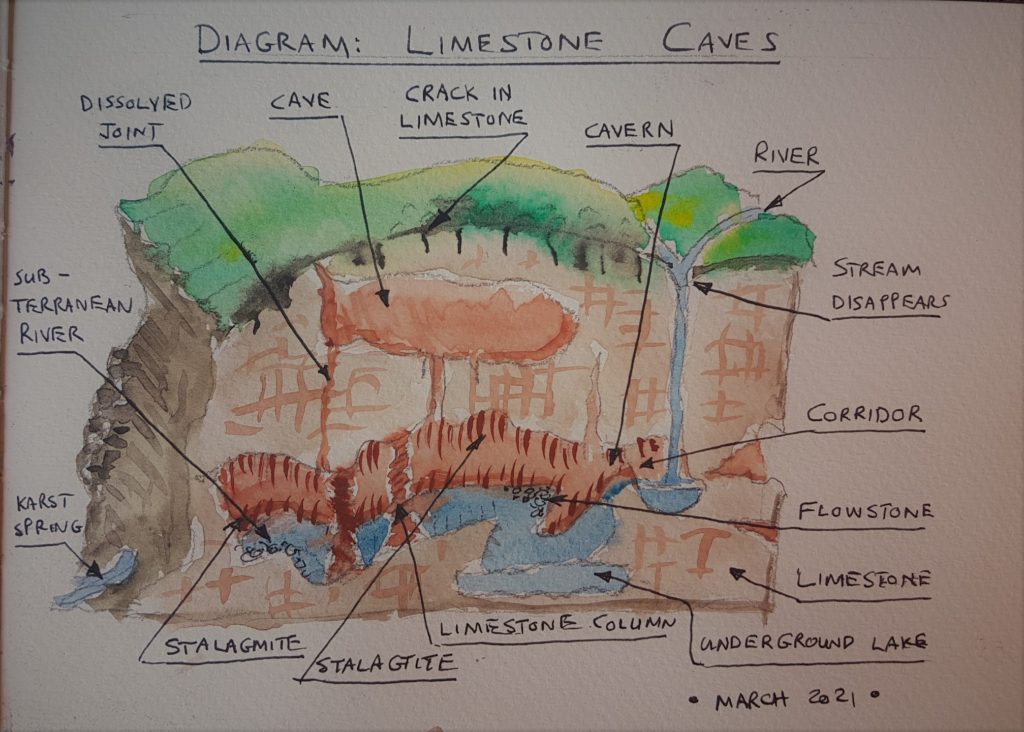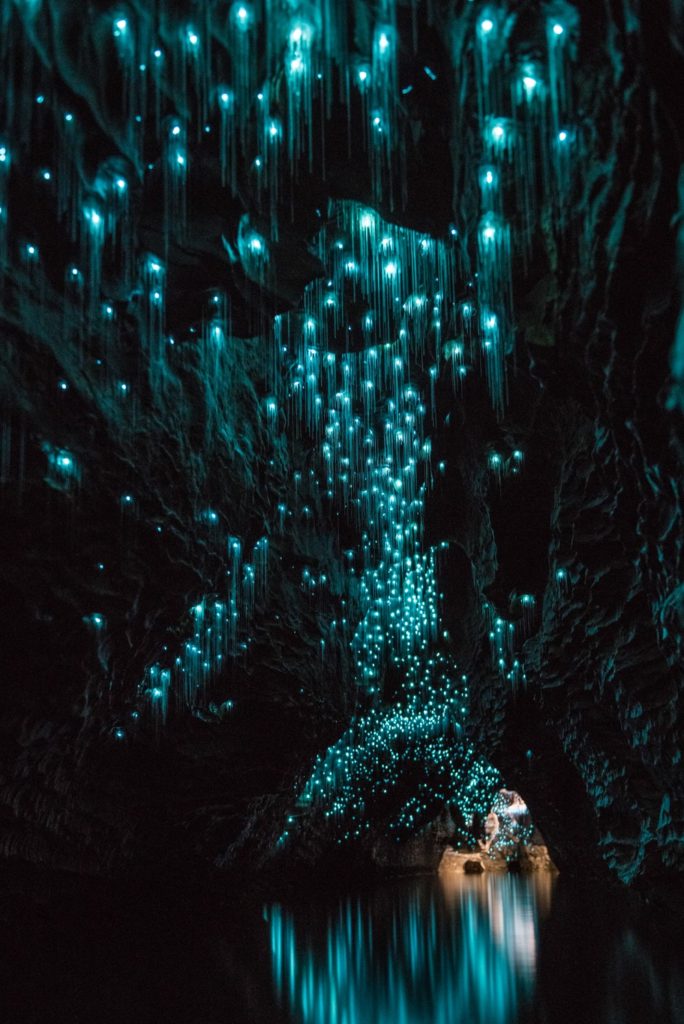$0.00
Description: Article – 2990 words including many images and a diagrammatic sketch from the author.
Description
Excerpt:
On Friday, 5 March 2021, I stepped into the unknown. It was dark, humid, and very black. Yellow cat-eyes stared at me from the ground. It was evenly spaced and extended way ahead of me. Where could it lead? It took some time for my sensitive eyes to adapt to the lack of light.
The tiny yellow eerie-lights led the way – into the unknown.
The handrails were dead-cold and wet. My cold, wet hands slipped away from the cold stainless steel. It must have cost a small fortune to install all these stainless steel handrails, I thought. I know all types of metal. This was definitely stainless steel. Tiny grooves have been added in an attempt to reduce the slippery surface of the rail in the always wet conditions.
The guide stopped and waited till the group all gathered around him. His headlight was pointing up. It looked like a halo. I looked up. Pointy stalactites hanged dangerously low from the roof of the cave.
“Don’t touch the limestone. The natural chemicals on your hands will affect it,“ said the guide. I instinctively pulled my hand back. “There is a $ 10,000 fine in place to protect all the precious stalactites and stalagmites,” said the guide with a friendly smile.
The guide’s light, some 15 meters ahead of me, skimmed over some more interesting formations. It looked like wax, white candle wax. There was a unique curtain formation – a beautiful limestone drape.
The headlight of the guide went down, right down. It seemed like the earth was opening its mouth. Cracks and crevasses extended into the abyss. Then I noticed the walkway was suspended several meters above the large rocks. I felt unsafe. I stopped and placed my hands on the handrail; I then knelt down and touched the walkway’s different parts and components. The structure was a combination of different materials. Stainless steel rods – diameter of about 20 mm – was anchored into the rocks and was connected to the walkway bridge. It looked like spider web chords holding the ‘fairy-bridge’ in position. The floor was a strong galvanised metal grid with a recyclable rough layer of plastic on top of it. It was very rough. The footing was very well designed to prevent any slipping while walking on the walkway bridges. The wet conditions in the caves required secure footings. Safety in a cave is paramount. The sides of the bridges and walkways were covered with galvanised steel mesh with a diameter of about 6 mm to 8 mm. The construction was solid and rustproof.
“An amount of 30 million dollars was spent to make these caves accessible to all people. That includes toddlers and babies in strollers and challenged people in wheelchairs,” added the guide. ‘Wow, that explained the choice of materials and the well-thought-through engineering in the caves,’ a random thought crossed my mind. Outstanding design and engineering! Very sustainable. The robust, solid and rustproof walkways are indeed very sustainable. The materials would probably last for hundreds of years with minimum maintenance required. The Waitomo Caves in New Zealand have received particular attention from sustainable engineers and designers.

From the author’s sketchbook: A 3-D diagram of a typical limestone cave formation. The diagram shows a sectional view through a cave system. At the top, the river disappears into the limestone rock formation. The water dissolves the limestone through chemical processes and creates fantastic cave systems; in this diagram, the water exits in a Karst Spring (far left bottom). Most of the world’s caves, including those at Waitomo Caves in New Zealand, are formed in porous limestone. Over hundreds of years, acidic groundwater or underground rivers dissolve away the limestone, leaving cavities that grow over time. Beautiful wax-like cones are formed called stalactites (hanging down), and stalagmites (standing up from the cave floor) are formed in the caves. Credit: William Van Zyl – March 2021.
Wait, there are more sustainable features.
“All the Led-lighting, sensors and light timers in the cave, are they powered by solar panels?”
“Yes, solar panels outside are the main source of power for the lighting and electrical systems in the caves,” answered the guide.
“Are there any other sustainable features in the caves?”
“Led lighting throughout the caves are huge energy savers, as you most probably know. It saves 70% to 80% power compared to incandescent lighting. The CO2 sensors and other sensors – detecting movement – are all powered by solar energy. Very energy efficient indeed. The light-timers are designed and placed at specific points to minimise the use of energy in the caves. It also ensures that the glow worms and the sensitive ecosystems are affected to the minimum.”
“The special tunnel – with two airtight doors on both ends – are very effective, aren’t they?”
“You’re right. The short tunnel ensures that the airflow from the main entrance is not extended into the rest of the cave system,” said the guide.
“Are the biodiversity in the caves stable and balanced?”
“Yes, it is. Scientific data is collected regularly, and comparative studies are made to ensure any changes are flagged. The biodiversity issues faced by the Waitomo Glowworm Cave, the Ruakuri Cave and the Aranui Cave are addressed immediately. The larvae of the genus Arachnocampa, also known as glowworms, are bioluminescent predatory insects that use light to attract prey and are very sensitive creatures,” continued the guide.

Glowworms attached to the roof of the Waitomo Caves. Credit image: Waitomocaves.com. Link: https://www.waitomocaves.com/visitor-information-i-site/caving/cave-tours/





